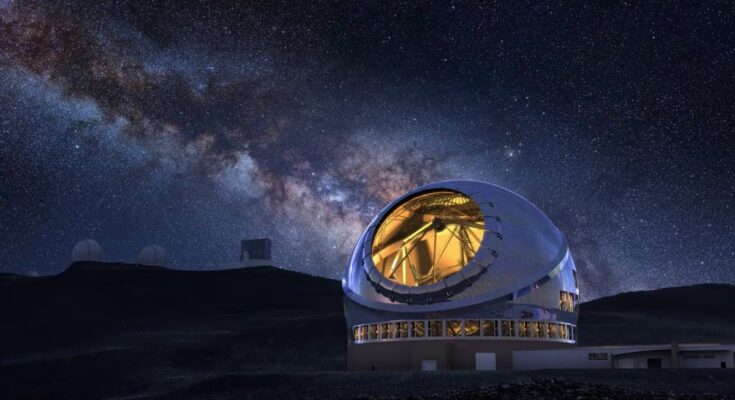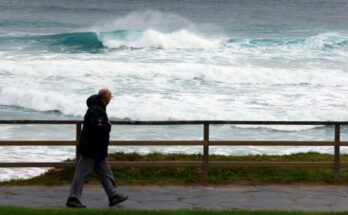The largest telescope in the Northern Hemisphere is now a little closer to Spain. The Thirty Meter Telescope consortium has just announced that it is exploring the possibility of bringing the facility to the island of La Palma, in the Canary Islands, after a “generous offer” from the Spanish Ministry of Science.
In July, the Minister of Science, Innovation and Universities, Diana Morant, committed to allocating 400 million euros for the structure which will be built on the island of La Palma, in the Canary Islands. If the offer finally convinces the consortium controlling the project, Spain would become home to the largest optical observatory in the northern hemisphere, which would replace the Gran Telescopio de Canarias.
The body that controls the project, with a total cost of 3 billion euros, said that the offer is “an opportunity” to make it happen. Although the final location has not yet been decided, the organization announced today that it will “jointly develop with the Ministry of Science, Innovation and University a detailed roadmap towards the possible realization of the TMT at the Roque de los Muchachos Observatory (La Palma, Spain)”.
The board of the Thirty Meter Telescope (TMT) recognizes the solidity of the Spanish Government’s proposal and advances the roadmap to install it in La Palma.
We continue to work to transform the Canary Islands sky into the main astronomical observatory in the Northern Hemisphere. https://t.co/9VgtJqYyvC
— Diana Morant (@DianaMorantR) November 12, 2025
The project, promoted by the United States, and initially located on the island of Hawaii, is on a knife edge because Donald Trump’s government has canceled its funding. The cut is the most obvious opportunity that Spain had to bring home this cutting-edge structure, since La Palma had already been chosen as an alternative location for the quality of its skies.
The construction of the TMT in the United States faces strong opposition from the natives, as it would be built on Mauna Kea, a mountain sacred to them, where there are already several first-class observatories. In 2019, the telescope consortium, composed of Japan, Canada, India and several American universities, including California, decided to pursue this localization. But the Trump administration decided not to spend another dollar on this project, diverting $1.6 billion to another major astronomical project, the Giant Magellan Telescope, which will be built in Chile. The decision came as a surprise, since a group of US scientists had recommended the construction of both projects.
The initiative now faces considerable uncertainty. A few billion dollars have already been spent on the conception of the project, another thousand million have been guaranteed, but another thousand are needed to be able to carry it out, as the director of the Institute of Astrophysics of the Canary Islands, Valentín Martínez-Pillet, explained to EL PAÍS. The astronomer believes that the way to obtain the 600 million that are still missing is through a European initiative that guarantees full financing of the construction, which would take 10 years.
The selection of La Palma would balance the scales of world astronomy. The largest observatories in the world are located in Chile, the country where the headquarters of the European Southern Observatory is located, where the Extremely Large Telescope and also the Magellan Telescope are being built. If the TMT were to eventually reach Hawaii, the Northern Hemisphere sky would remain unguarded, leaving out important possible discoveries, such as that of a second planet Earth.
Defenders of the Canarian option assure that the construction of the TMT could begin immediately, as the project has all the necessary permits, valid until September 2026.
The project would be fundamental for the island’s economy, especially after the disaster of the eruption of the Tajogaite volcano. According to IAC calculations, they would leave around 400 million euros in construction and generate around 150 jobs for observatory operators and several tens of millions of euros in operations every year. The project would double astronomy’s contribution to the island’s GDP to 6%. The Spanish bet also has a sense of emergency: if the TMT does not arrive, the island’s astronomical facilities will become obsolete within about 10 years, the director of the IAC warned.
The advances on Mauna Kea, Hawaii’s tallest mountain, began in 2014 and never took off. Opponents blocked the roads and stopped the works. The project has been criticized with a campaign of lies on social networks, according to which the installation is a laser weapon controlled by China or that it runs on nuclear energy. At the same time, a long legal battle began which ended in 2019. Despite this, construction has been completely stopped to date.
In Spain, however, the project has always had the support of all the competent institutions at all levels. The previous Minister of Science, Pedro Duque, worked hard to bring TMT to the Canary Islands. After the budget setback in the United States, the project of hosting this facility became possible again and the IAC started knocking on the doors of the authorities to revive it.



